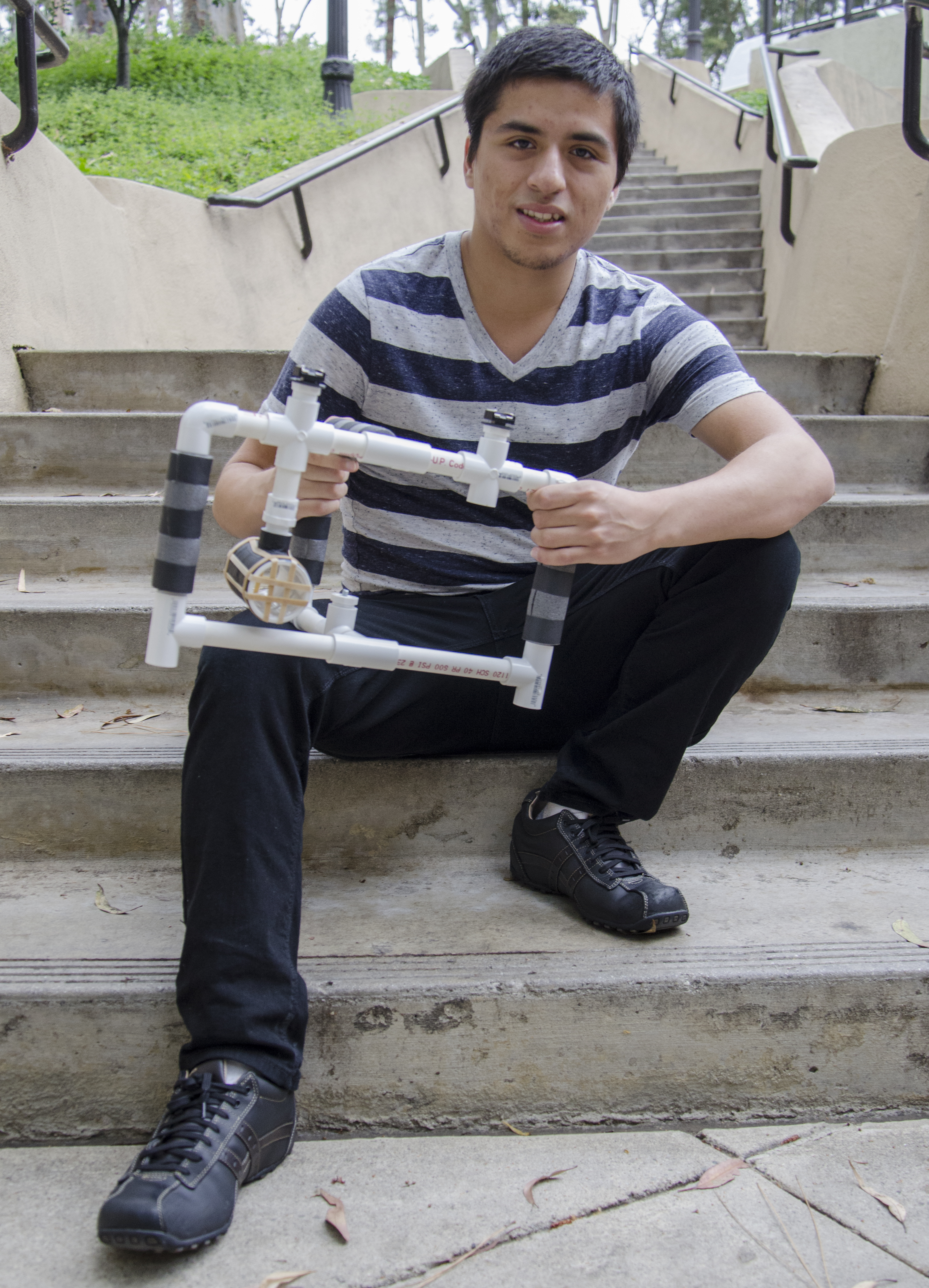Student filmmaker gears up with handmade equipment

Jonathan Coria, a second-year English student and devoted filmmaker. Coria saved thousands of dollars by using inexpensive materials like plywood to make his own filmmaking equipment.
By Asher Landau
June 6, 2013 12:20 a.m.
The process of Jonathan Coria’s filmmaking began with online YouTube tutorials and an assembly of gadgets from the local hardware store. He needed camera equipment for his new film but didn’t have the hundreds or thousands of dollars needed to buy one. So, Coria decided to make one himself.
“I was so determined to get into the film industry that I decided to stop wanting, and to start doing,” Coria said. “I realized that I needed my own film equipment to achieve my artistic vision.”
This winter break, Coria, a second-year English student and aspiring filmmaker, spent his three weeks off creating from scratch a jib crane, steadicam, shoulder rig and dolly, tools integral in pulling off difficult shots like tracking and vertical panning. Taking the initiative to build this equipment gave Coria the edge he needed to score an internship this summer as creative director of a documentary investigating the struggles of non-English speakers as they adapt to the language with the We Speak English Project.
While working with the We Speak English Project, Coria said he will add his artistic vision to its in-film interviews. This includes framing shots, lighting the setting and implementing other basic camera work that he learned working with his self-made film equipment.
In order to create these mechanisms, Coria said he read many articles and watched a plethora of YouTube how-to videos that described the process for making film equipment.
Coria began his creation with a jib crane, a crane consisting of a rotating arm that holds the camera while attached to a fixed stand. He said its ability to establish setting is an important and basic element of every film.
Coria was able to make a jib crane with inexpensive store-bought goods such as plywood, nuts, bolts, angle iron, steel-galvanized pipe and a speaker stand, instead of spending exponentially more to manufacture.
After trying the crane on a few practice shots, Coria said he was incredibly satisfied with the result.
“I was blown away by the finished product since I saw it could be implemented in a professional setting and nobody could tell the difference,” Coria said.
Melly Herrera, a camera assistant for one of Coria’s past projects, said seeing the self-made equipment being tested out on a set showed Coria’s intense passion.
“A lot of people don’t work that hard for what they want, and it’s obvious from his hard work that he knows what he wants,” Herrera said.
Eager to duplicate this success, Coria said he quickly began making more film equipment. Coria said the biggest reward for making the equipment came from seeing them being used on actual sets.
“The equipment adds detail into an amateur production and recreates the environment of a true Hollywood set,” Coria said. “It really elevates the stakes for what I’m doing.”
Although he is now creating his own film equipment and independently studying directing, Coria has not always been on the path to success.
Like the people portrayed in the documentary, Coria learned English as a second language.
During middle school, Coria was a student in the English as a Second Language program who struggled with English writing. This all changed when Coria met Louis de Barraicua, his English teacher and film mentor.
Coria said de Barraicua spoke in class of the determination it takes to be successful by mixing in a multitude of movie references and camera information.
Coria began visiting de Barraicua’s class after school to learn more about the filmmaking process, and eventually mastered the editing program Final Cut.
Coria said these sessions showed him how fun it was to piece a movie together and visually organize a film into a quality product that could embody his directorial voice.
De Barraicua said he believes Coria’s initial exposure to film editing allowed Coria to see the visually expressive shots necessary to create interesting films.
“Coria is really imaginative and so will always be thinking of ways to show things in an interesting and cool way,” de Barraicua said. “It was inevitable that he would build his own film equipment because of the need to get these creative shots.”
Besides providing an outlet for his creative expression, Coria said building his own film equipment will impress industry professionals with his dedication, having already set him apart from other applicants for the We Speak English Project.
“Building something has a different meaning than just buying,” Coria said. “It shows more about what your passion means to you and that you don’t just want to do it, you go do it.”


